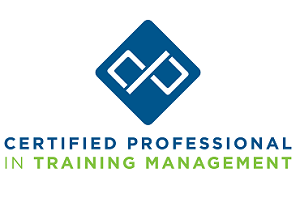Many companies have made great strides toward being more inclusive. Unfortunately, neurodiversity sometimes gets overlooked.
Factors such as age, race and gender identity are more straightforward to pinpoint and ensure inclusion. Autism spectrum disorder and other conditions can be more challenging to assess because they aren’t always visible. Encouraging neurodiverse leaders to join your team, and training them to be successful, requires extra effort but can result in a highly efficient organization that outshines competitors.
Why Do Neurodivergent People Make Great Leaders?
Researchers estimate that 15-20% of people show divergence. Conditions include Attention deficit hyperactivity disorder (ADHD), dyslexia, learning disorders and autism. Many neurodivergent individuals work in the science, technology, engineering and math (STEM) fields, though they may be underrepresented in leadership roles.
While many neurodivergent professionals struggle with tasks such as organization and sensory issues, they can develop strengths in other areas that make them excellent leaders, such as:
- Hyper-focus.
- Creativity.
- Authenticity.
- Innovative thinking.
- Empathy.
- Attention to detail.
- Excellent memories.
- Resilience.
Neurodivergent people can be excellent leaders because they offer unique thought processes that balance their team’s skills.
How Can We Help Train Neurodiverse Leaders?
A neurodivergent brain functions differently than that of the average person. Adjusting training and recruitment efforts can be the push someone needs to seek a leadership position they’d excel in.
1. Utilize Different Teaching Methods
One challenge for neurodiverse people is their various learning preferences. Since neurotypical people also have different educational preferences, using a range of training techniques and offering options helps everyone on the team.
Talk to your workers about how they learn best. Ask if they’re struggling with training material and work together to find solutions to fix issues. For some, this can mean taking the training home where it is quiet and they can focus. Others may need a video lecture or for you to read the material to them so they can better absorb it. Be open to changing your approach.
2. Improve Communication
People have a range of communication styles. Those with certain conditions could have difficulty understanding nuances, such as jokes, sarcasm and subtle hints. Trainers should strive to speak directly and in concrete terms. For example, someone with ADHD might grow frustrated trying to focus during a long lecture of endless words and want a summary.
Companies can adapt to different communication and learning preferences by breaking information into smaller chunks, using varied forms and asking how training is going. Neurodivergent employees may leave more frequently than neurotypical colleagues because they feel misunderstood.
3. Understand Neurodiverse Employees’ Needs
Neurodivergent workers often learn to mask their true selves to adapt to the workplace. They may be so focused on surviving the day that they need additional opportunities to showcase their strengths and shine. Most team managers and CEOs would agree they want their workers to feel free to be themselves and bring their unique strengths to work.
Appreciate the challenges someone with autism might feel, for example. A traditional nine-to-five day might be outside their comfort zone. Adding a hybrid approach and giving people space to decompress from social interactions can help them thrive. This could help you retain your most talented employees. Studies show that team members who feel appreciated may stay longer, reducing employee churn.
4. Find Unique Strengths
Everyone on the training team must learn to appreciate the unique abilities that different-thinking people bring to the table. Those with ADHD, for example, might not thrive in a classroom-type setting but are highly creative problem solvers. Individuals on the autism spectrum are often detail-oriented and appreciate assignments, including intricate tasks.
Change the location and even length of training to better suit each individual on the team. This will allow everyone to thrive and showcase what they’re best at.
5. Focus on Flexibility
Organizations that wish to include neurodivergent employees must learn to be more flexible in their approaches. An autistic leader may need to communicate in writing, such as text messages or notecards, to avoid overstimulation from too many conversations.
Company management can embrace the needs of all employees by offering flexible schedules, remote options, places to get away from the noise and chaos of the office, and strong human resources (HR) support.
Give Neurodivergent Leaders a Voice
One of the best ways to raise up more neurodivergent leaders in your business is to encourage neurotypical people to advocate for them. One of the characteristics of an autistic person can be their reluctance to speak up for themselves. Their brain may not focus on what they need to do to get ahead, and higher-ups may overlook them for the promotions they deserve.
Train other employees to be more inclusive of all cognitive types to truly change your company’s culture. Neurodivergent leaders can drive a company to new, creative heights. They need a chance to show what a huge value they are to the entire staff.



